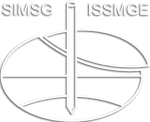Examining levee integrity: centrifuge modelling of internal erosion arising from structural culvert defects
Examining levee integrity: centrifuge modelling of internal erosion arising from structural culvert defects
This paper presents pore pressure results following the hydro-mechanical response of levee systems, with a specific focus on internal erosion, a critical concern identified by the U.S. Army Corps of Engineers. Leveraging the Engineer Research and Development Centres Centrifuge Research Complex, four 20G centrifuge tests were conducted, simulating different culvert defect scenarios. The experiments quantified the initiation, progression, and surface expression of internal erosion caused by these defects. The experimental design included the construction of a levee cross section with a 50.8mm diameter aluminium culvert, and the novel addition of thermal infrared sensing for detecting seepage and erosion channels. The integration of numerical modelling using SEEP/W successfully approximated steady-state conditions before the defect was opened. The experiments underscore the importance of addressing potential levee vulnerabilities given variations in measured pressure during the internal erosion process. The results also highlight the promising role of thermal infrared sensing in detecting seepage, suggesting its potential for future modelling applications. Further investigations involving systematic variation of boundary conditions and careful consideration of instrument proximity are recommended to enhance the understanding of the presented work.
J. Westcott; A. Bowman; John Murphy; Andrew Trautz; Carole Karam
5th European Conference on Physical Modelling in Geotechnics (ECPMG2024)
Geotechnical infrastructure
https://doi.org/10.53243/ECPMG2024-112
